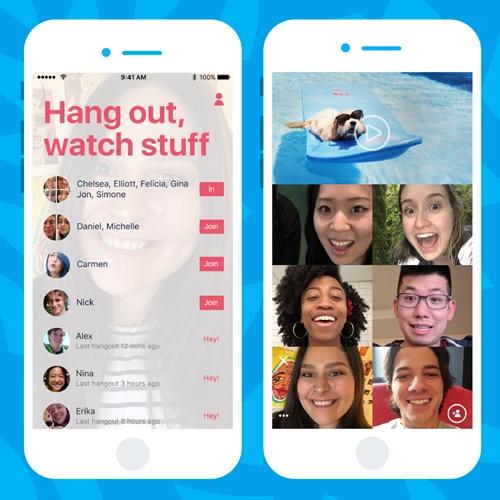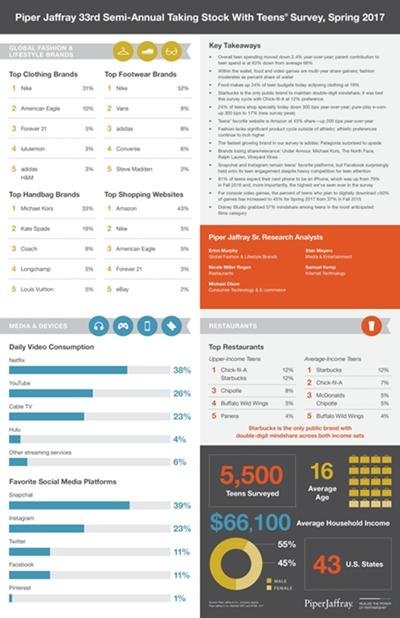This week's 'Skim kicks competition up a notch: Facebook unveils a suite of new apps, tools, and features at its yearly F8 developer conference; YouTube's algorithm change is wiping out revenue for some; LinkedIn explains how its new privacy policy will affect users; Snapchat launches impressive new augmented reality Lenses, reportedly readies a self-serve ad platform; Tumblr takes on co-viewing with a new app; 20 video content ideas for your social media strategy, and much more...
Skim to stay up to speed!
1. Everything Facebook launched at F8 and why
TechCrunch's roundup of Facebook's big developer conference highlights absolutely all you need to know about the latest from the social giant. Check out the most important bits below, but be sure to scan through the entire slideshow for all the major takeaways and how they'll affect you!
- Camera effects platform: A new platform for developers to create an endless array of augmented reality filters (likely in order to one-up Snapchat)
- Facebook Workplace: The company's work collaboration platform can now integrate with file services like Box, things like Salesforce, and more (likely to take on Slack)
- Instagram offline mode: Android users can now view content they've previously loaded, and leave likes and comments that register once back online (likely to attract users in countries with more limited data capabilities)
- AI-powered Facebook Insights: Business page insights now uses artificial intelligence to scan for and highlight your best performing content
- Facebook Spaces: A new virtual reality app for Facebook's Oculus products meant to give users a new way to "hang out" (likely to be a first-mover in the VR world)
- Messenger 2.0: Bots like Spotify or Subway will allow Messenger users to listen to music in-app or order and pay for a sandwich. A new discovery feature will help users find relevant bots for them.
2. YouTube's "adpocalypse" is destroying revenue for some content producers
In response to the boycott of YouTube by dozens of brands scared to have found their ads on the platform aside videos with objectionable content, YouTube implemented a sudden change to its algorithm that has left some YouTube creators with massive voids where their ad revenue used to be.
Whereas YouTube's goal was to help brands feel more comfortable by taking a tougher line on where brands' ads are placed, the algorithm change also reportedly tanked ad revenue for channels with political commentary, military-associated content, and other types of content that might, possibly, be considered objectionable by some.
It's a sticky situation for all involved, and it could be one of the defining moments—and battles—in YouTube's history.
3. LinkedIn previews new privacy policy, and what it means for users
Linkedin's privacy policy and user agreement will get a refresh in June, and the Microsoft-owned company wants to be up front about how the changes will affect users. Some third-party services will be able to show users' profiles to their users, increasing users' visibility and, hopefully, helping them more easily connect with relevant members and find opportunities.
New automated systems and bots will assist users with pre-drafted messages, offer ice breakers, and assist with scheduling meetings. The changes will also let users take advantage of a new feature to help them find nearby members who might be at a conference or event.
Most all of these new features come with opt-in or opt-out possibilities, so you'll still (mostly) have control of what you'd like to take part in.
4. Snapchat reportedly ready to give advertisers a self-serve ad platform
Snapchat's making a play for more advertisers in the face of possibly the most challenging period for its future by building a way for brands to buy and serve video ads—not just geofilters—all by themselves via a self-serve platform. The report from Digiday suggests the platform could launch shortly and bring a big advertising bump for Snapchat.
Prior, a semi self-serve platform allowed advertisers to purchase directly on the platform, but they still had to do so through an API partner or third party, which often came with big markups. Now, brands will be able to create and run full-screen vertical video ads between users' Stories or within the app's Discover section by themselves.
The move comes at a time when Snapchat needs to justify its $20 billion valuation after going public in March.
5. Tumblr launches app to watch videos with friends
Introducing Cabana, Tumblr's new app—and its attempt to convince users to share and watch videos, in real time, with their real-life friends. Whereas Tumblr boasts a fandom environment where strangers can connect and share content based on similar interests, Cabana is meant to be a place for real-life groups of friends to share that viral video they just discovered and can't wait to spread, or that newsworthy, gut wrenching clip that pulls at heartstrings.
Tumblr certainly isn't the first to jump into the co-viewing space; YouTube has been experimenting with its own app called Uptime—and many others exist. There's no advertising in Cabana for now, nor is there a clear-cut path for brands to get involved, but the co-viewing space is certainly one to keep an eye on.







